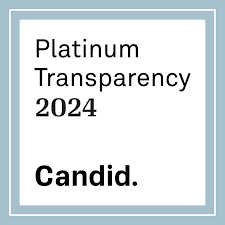Media Literacy is Crucial for Young Citizens
October 31, 2025 by
 In a world overflowing with information, teaching our students in grades 7-12 to be discerning consumers and creators of media isn’t just a good idea—it’s an imperative for the future of our democracy. As educators, we have a vital role in equipping students with the skills to navigate the complex landscape of news and information, fostering active, responsible citizenship and meaningful engagement in deliberative democracy. Media Literacy Week is a good reminder that helping to develop news literacy is a responsibility of all educators.
In a world overflowing with information, teaching our students in grades 7-12 to be discerning consumers and creators of media isn’t just a good idea—it’s an imperative for the future of our democracy. As educators, we have a vital role in equipping students with the skills to navigate the complex landscape of news and information, fostering active, responsible citizenship and meaningful engagement in deliberative democracy. Media Literacy Week is a good reminder that helping to develop news literacy is a responsibility of all educators.
Think about the sheer volume of “news” your students encounter daily. It’s not just the evening broadcast or a printed newspaper anymore—and for young people it is rarely those things. It’s TikTok scrolls, Instagram stories, YouTube explainers, and an endless stream of links shared by friends. Without a critical lens, it’s incredibly easy for misinformation, biased reporting, or even outright propaganda to be accepted as truth. This isn’t just about identifying fake news; it’s about understanding the nuances of reporting, recognizing different perspectives, and questioning the sources behind the information.
The Pillars of News Media Literacy
So, what does news media literacy look like in practice for our students? It encompasses several key areas:
- Source Evaluation: Who created this information? What are their credentials? What is their agenda or funding? This goes beyond a simple “Is it Fox or CNN?” It delves into the underlying motivations and potential biases of all media producers, from individual influencers to major news organizations. Teaching students to look for “About Us” pages and author bios, to read laterally about sources by researching them online, and even to research the history of a publication can be incredibly insightful.
- Identifying Bias (Overt and Subtle): Bias isn’t always a malicious intent to deceive. It can be inherent in the language used, the stories chosen, the images presented, and even the framing of a headline. Help students understand the difference between objective reporting and opinion pieces, and how even “straight news” can subtly convey a particular viewpoint through word choice or emphasis.
- Understanding Media Formats and Purpose: A viral meme might be entertaining, but it’s rarely a reliable source of in-depth information. Students need to differentiate between news articles, editorials, advertisements, documentaries, and social media posts. Each format has a different purpose and level of journalistic rigor.
- Fact-Checking and Corroboration: In an age of deepfakes and manipulated images, the ability to fact-check is paramount. Encourage students to read laterally—meaning, when they encounter a claim, they open new tabs and see what other reputable sources say about it. Tools like Snopes, PolitiFact, and even a quick Google search with critical keywords can be invaluable.
Media Literacy and the Health of Our Democracy
The connection between media literacy and active citizenship is undeniable. A healthy deliberative democracy relies on an informed populace capable of engaging in respectful debate, making sound judgments, and holding leaders accountable. If citizens cannot distinguish credible information from partisan spin or outright falsehoods, their ability to participate effectively in civic life is severely hampered.
When students understand how news is constructed, they become less susceptible to emotional manipulation and more capable of forming their own well-reasoned opinions. They learn to question, to seek out diverse perspectives, and to engage in constructive dialogue, even when confronted with opposing viewpoints. These are not just academic skills; they are life skills essential for navigating an increasingly complex world and for strengthening the fabric of our society.
Integrating media literacy into your curriculum—which Close Up can help you do through our professional development training for educators and our innovative Civil Discourse Credential for students—doesn’t require a complete overhaul. It can be woven into English language arts through analyzing articles, into social studies through examining historical propaganda, or even into science by dissecting how scientific claims are presented in popular media.
Let’s empower our students to be more than just consumers of information. Let’s help them become critical thinkers, responsible citizens, and active participants in shaping our shared future. The future of our democracy depends on it.
As always, we encourage you to join the discussion with your comments or questions below.
Sources
Featured Images: Defense Advanced Research Projects Agency | allaboutvision.com







